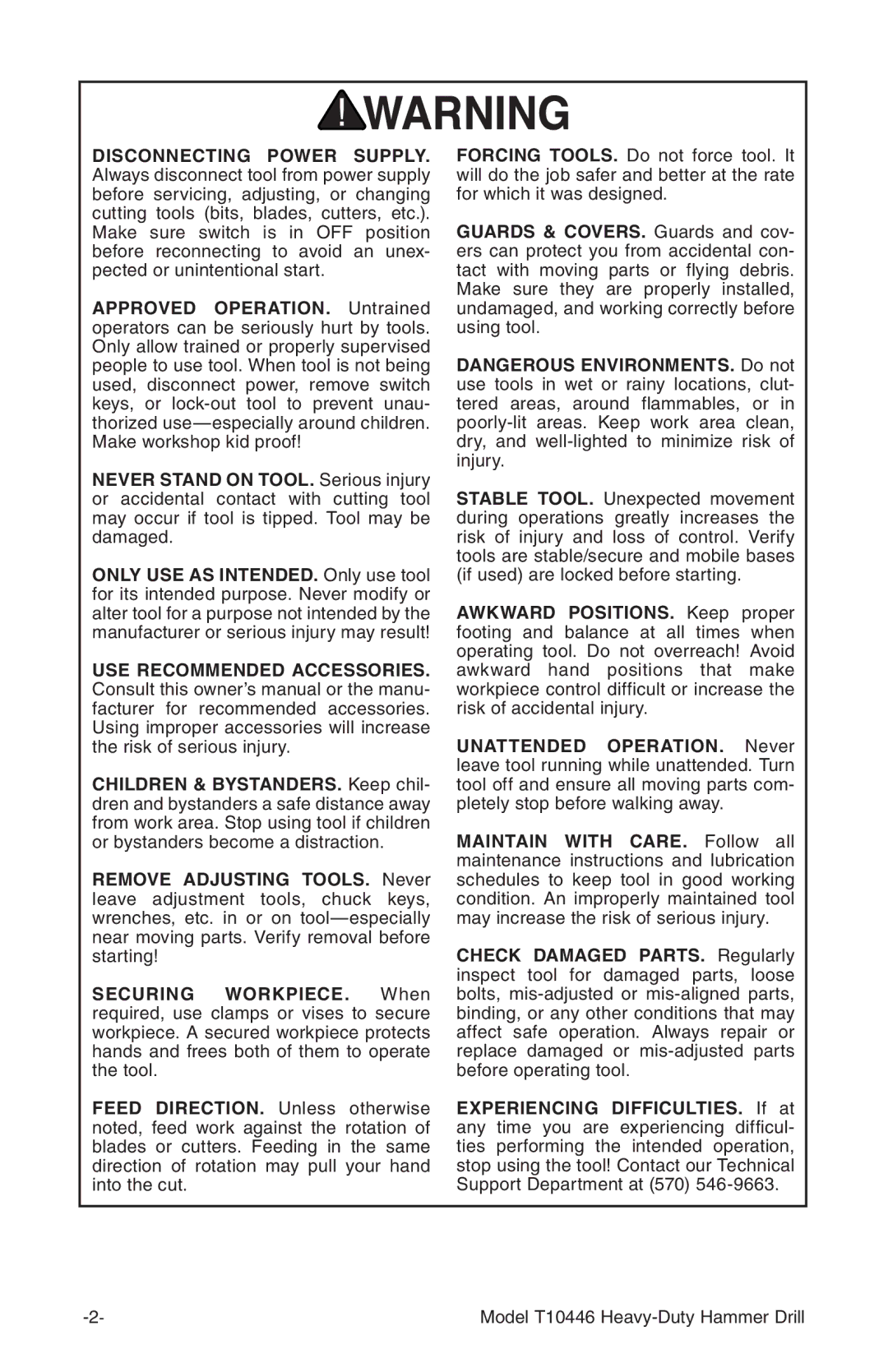
DISCONNECTING POWER SUPPLY. Always disconnect tool from power supply before servicing, adjusting, or changing cutting tools (bits, blades, cutters, etc.). Make sure switch is in OFF position before reconnecting to avoid an unex- pected or unintentional start.
APPROVED OPERATION. Untrained operators can be seriously hurt by tools. Only allow trained or properly supervised people to use tool. When tool is not being used, disconnect power, remove switch keys, or
NEVER STAND ON TOOL. Serious injury or accidental contact with cutting tool may occur if tool is tipped. Tool may be damaged.
ONLY USE AS INTENDED. Only use tool for its intended purpose. Never modify or alter tool for a purpose not intended by the manufacturer or serious injury may result!
USE RECOMMENDED ACCESSORIES. Consult this owner’s manual or the manu- facturer for recommended accessories. Using improper accessories will increase the risk of serious injury.
CHILDREN & BYSTANDERS. Keep chil- dren and bystanders a safe distance away from work area. Stop using tool if children or bystanders become a distraction.
REMOVE ADJUSTING TOOLS. Never leave adjustment tools, chuck keys, wrenches, etc. in or on
SECURING WORKPIECE. When required, use clamps or vises to secure workpiece. A secured workpiece protects hands and frees both of them to operate the tool.
FEED DIRECTION. Unless otherwise noted, feed work against the rotation of blades or cutters. Feeding in the same direction of rotation may pull your hand into the cut.
FORCING TOOLS. Do not force tool. It will do the job safer and better at the rate for which it was designed.
GUARDS & COVERS. Guards and cov- ers can protect you from accidental con- tact with moving parts or flying debris. Make sure they are properly installed, undamaged, and working correctly before using tool.
DANGEROUS ENVIRONMENTS. Do not use tools in wet or rainy locations, clut- tered areas, around flammables, or in
STABLE TOOL. Unexpected movement during operations greatly increases the risk of injury and loss of control. Verify tools are stable/secure and mobile bases (if used) are locked before starting.
AWKWARD POSITIONS. Keep proper footing and balance at all times when operating tool. Do not overreach! Avoid awkward hand positions that make workpiece control difficult or increase the risk of accidental injury.
UNATTENDED OPERATION. Never leave tool running while unattended. Turn tool off and ensure all moving parts com- pletely stop before walking away.
MAINTAIN WITH CARE. Follow all maintenance instructions and lubrication schedules to keep tool in good working condition. An improperly maintained tool may increase the risk of serious injury.
CHECK DAMAGED PARTS. Regularly inspect tool for damaged parts, loose bolts,
EXPERIENCING DIFFICULTIES. If at any time you are experiencing difficul- ties performing the intended operation, stop using the tool! Contact our Technical Support Department at (570)
Model T10446 |
